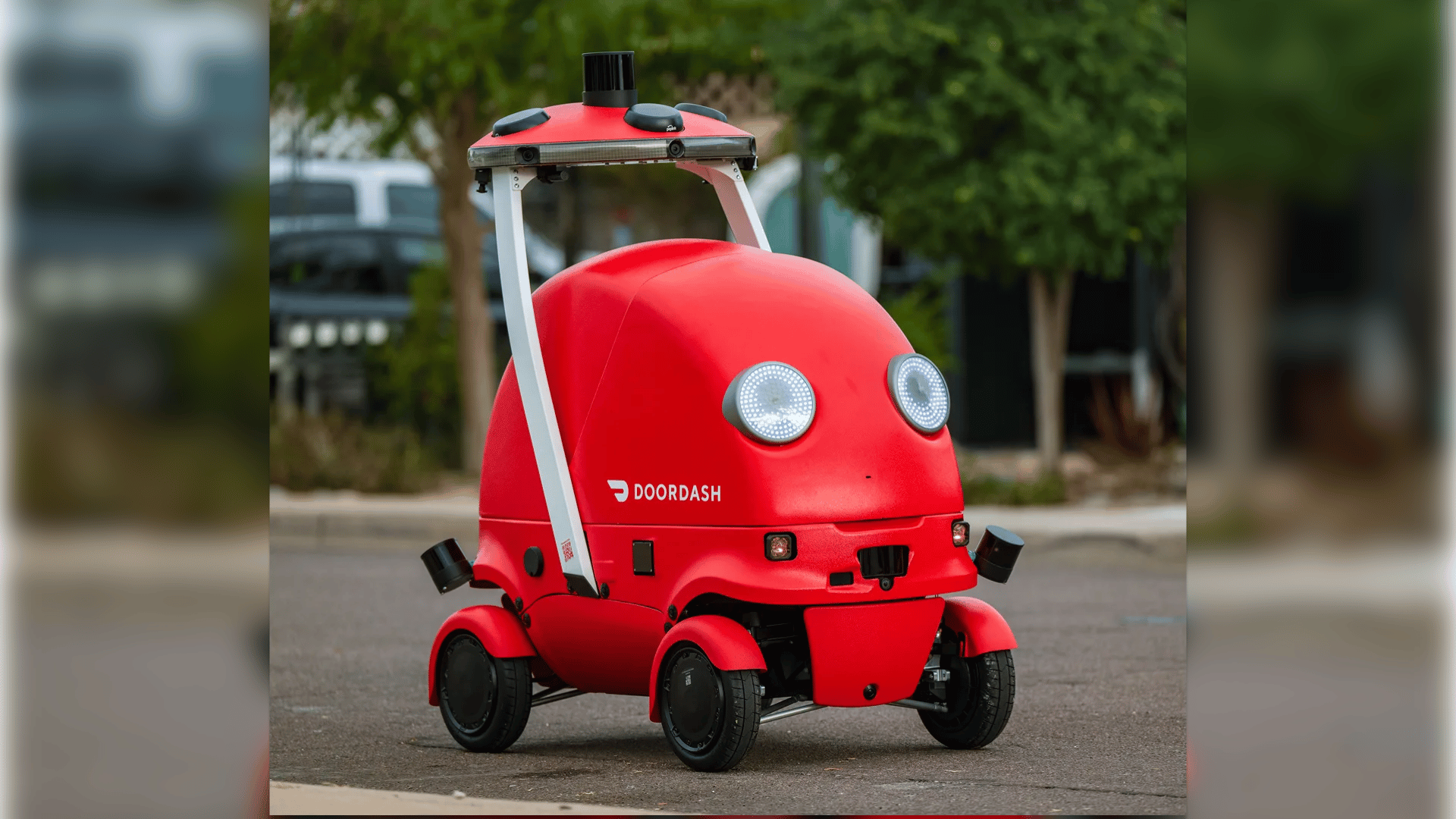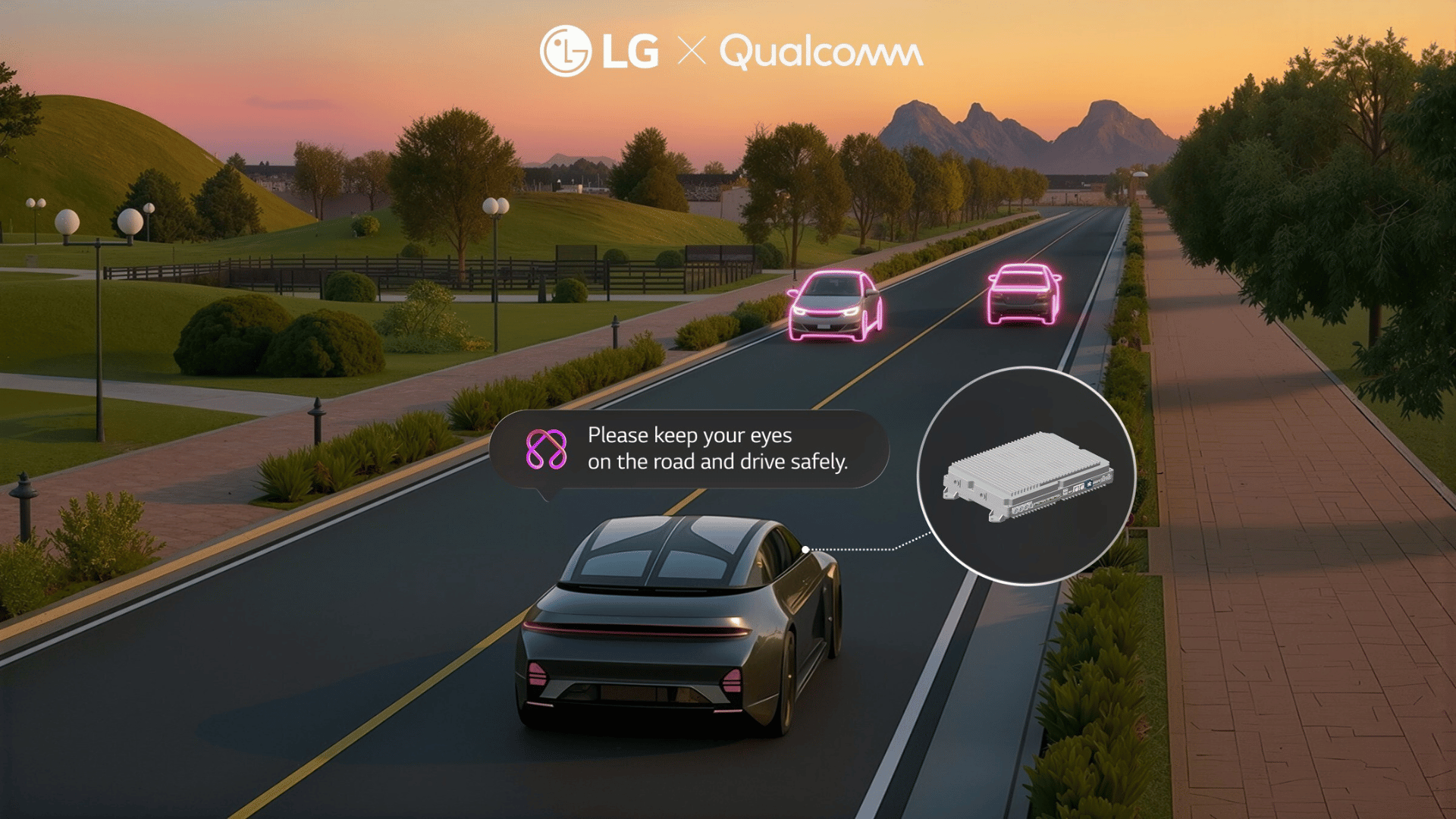DoorDash has unveiled its new robot, Dot, which can autonomously drive on roads, bike lanes, and sidewalks to deliver food and small packages.
DoorDash Introduces Dot

The small robot, built in-house, can deliver at speeds of up to 20 miles per hour. The visual design of the robot is meant to look friendly, with bright red paint, large LED eyes, and a mouth that opens to reveal your food.
Dot is less than five feet tall, three feet wide, weighs 350 pounds, and has four wheels. According to TechCrunch, Dot’s “mouth” can fit up to 30 pounds of food or six pizza boxes. It can also hold various inserts, including coolers and cupholders.
The top of the vehicle includes an LED strip that displays text and a speaker that emits a robotic voice. Dot even has a microphone, which could be used to facilitate AI-powered conversations between Dot and customers.
The robot navigates and detects obstacles using eight external cameras, four radar sensors, and three lidar sensors. According to DoorDash, the cameras are powered by a real-time AI model that utilizes search-based algorithms and deep learning to determine the optimal route.
DoorDash co-founder Stanley Tang told reporters that autonomous delivery in suburbs and cities could become a large market.
“You don’t always need a full-sized car to deliver a tube of toothpaste or pack of diapers,” said Tang. “Dot is purpose-built for the millions of deliveries we facilitate every day. It is small enough to navigate doorways and driveways, fast enough to maintain food quality, and smart enough to optimize the best routes for delivery.”
City and state officials believe the small vehicle could be a way to reduce traffic congestion. DoorDash has stated that, while humans will still carry out the majority of daily orders, the robot will allow them to “focus more on the high-value orders that require human judgment and care.”
The robot is being tested with early access partners in the Phoenix metropolitan area. The firm plans to make it available to the region’s 1.6 million residents by the end of 2025.







